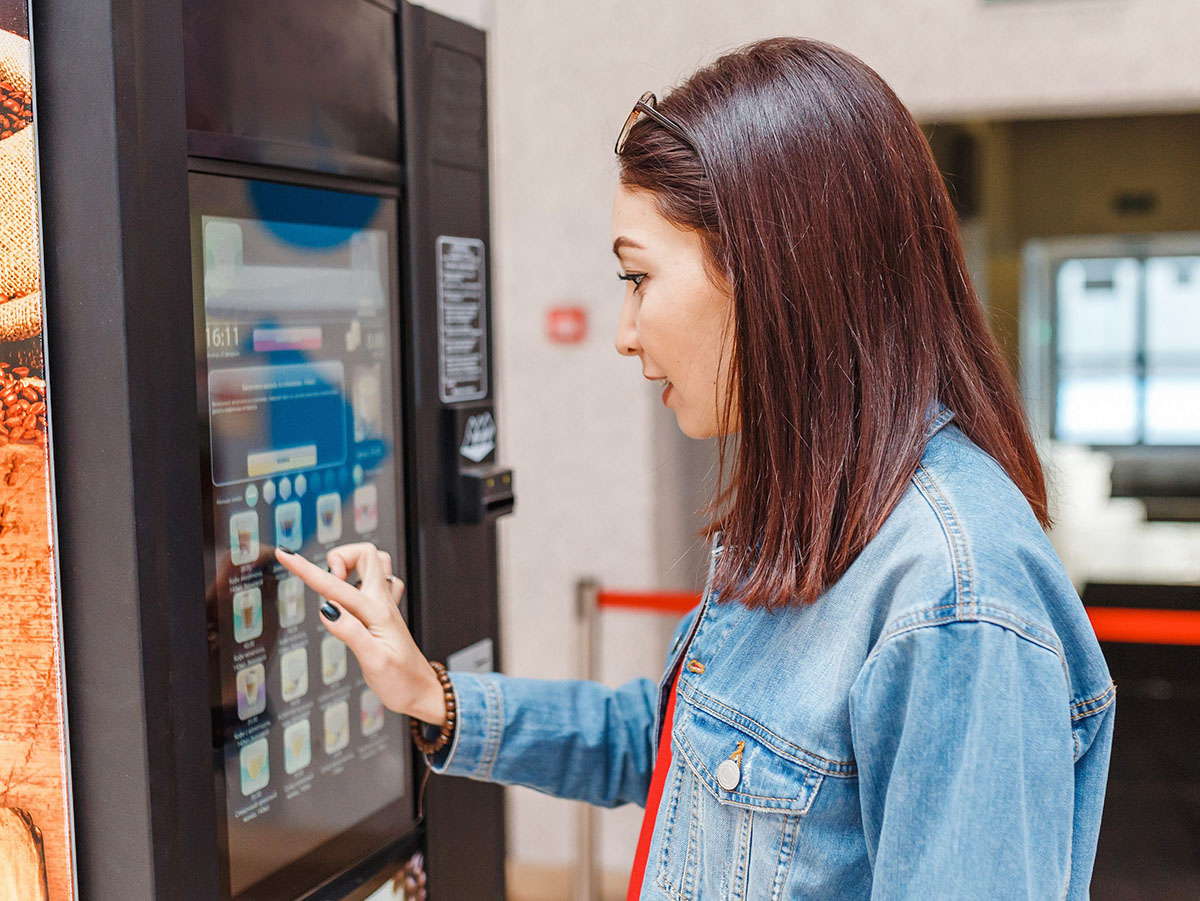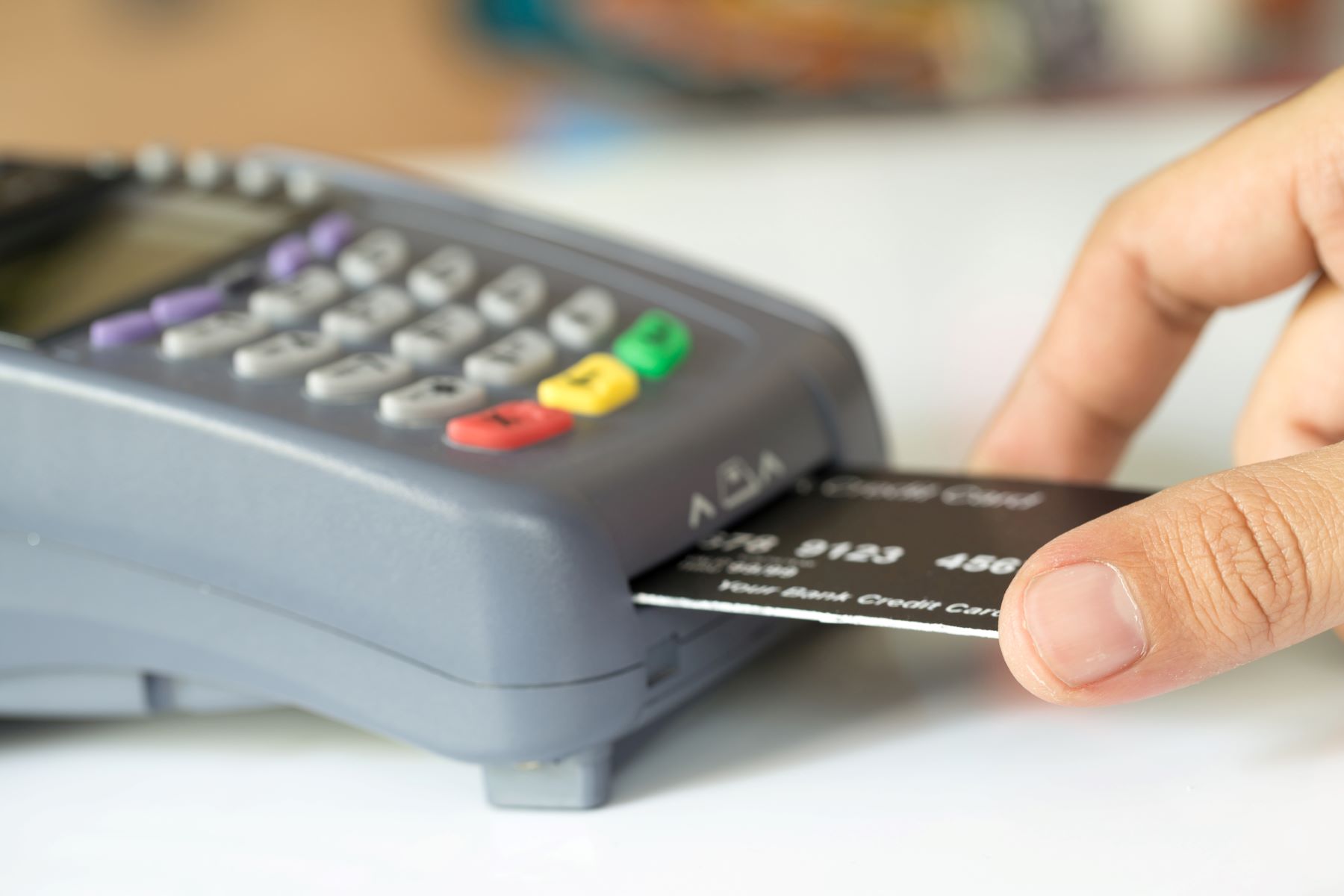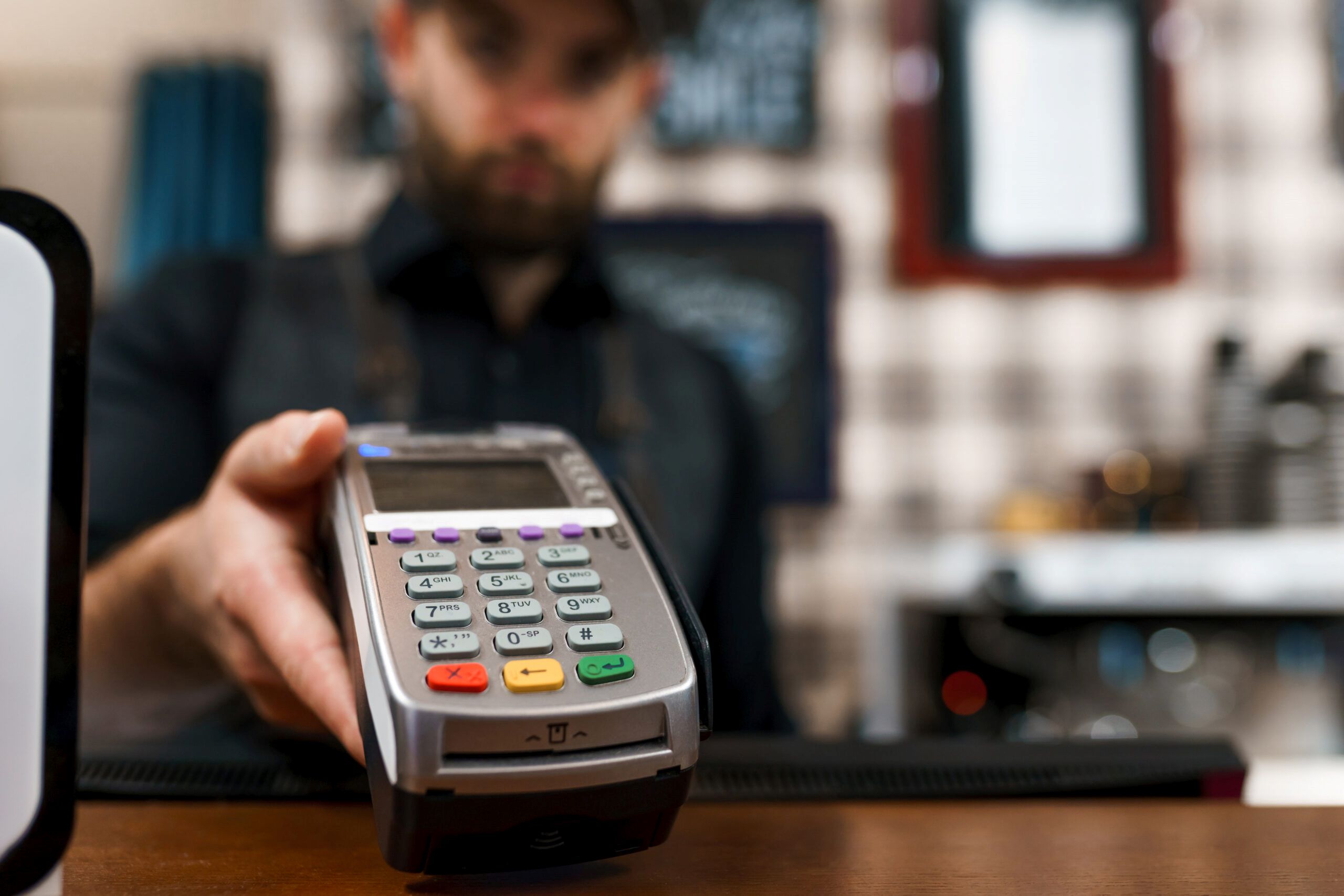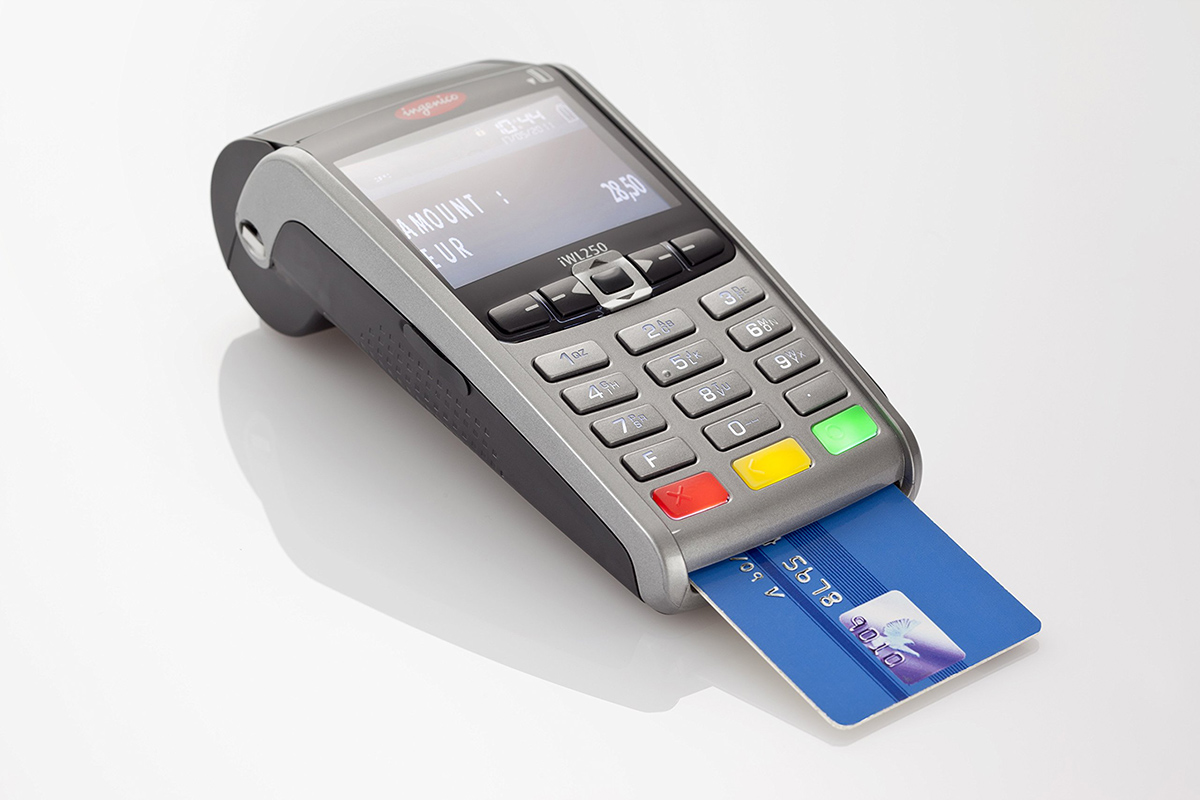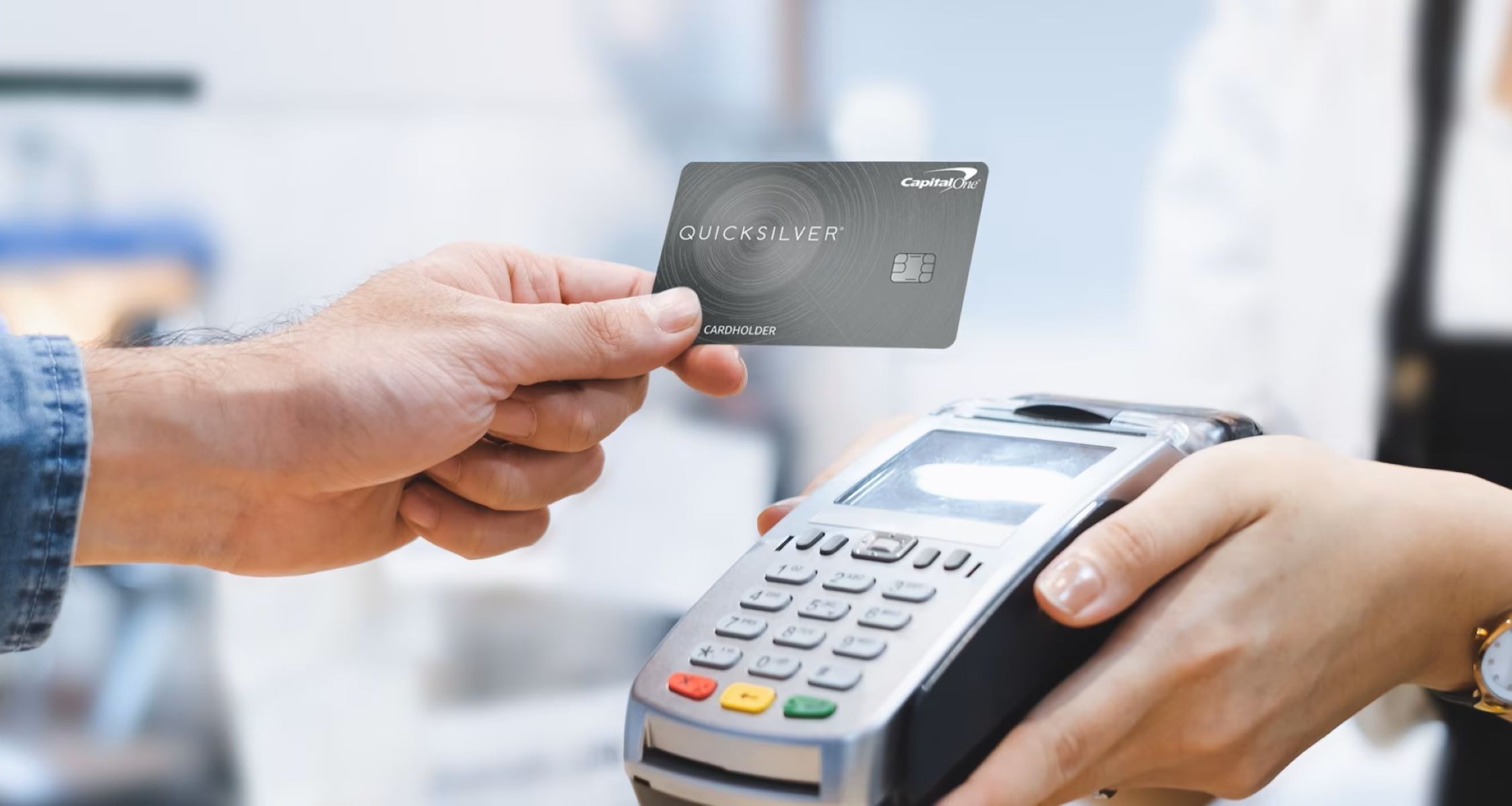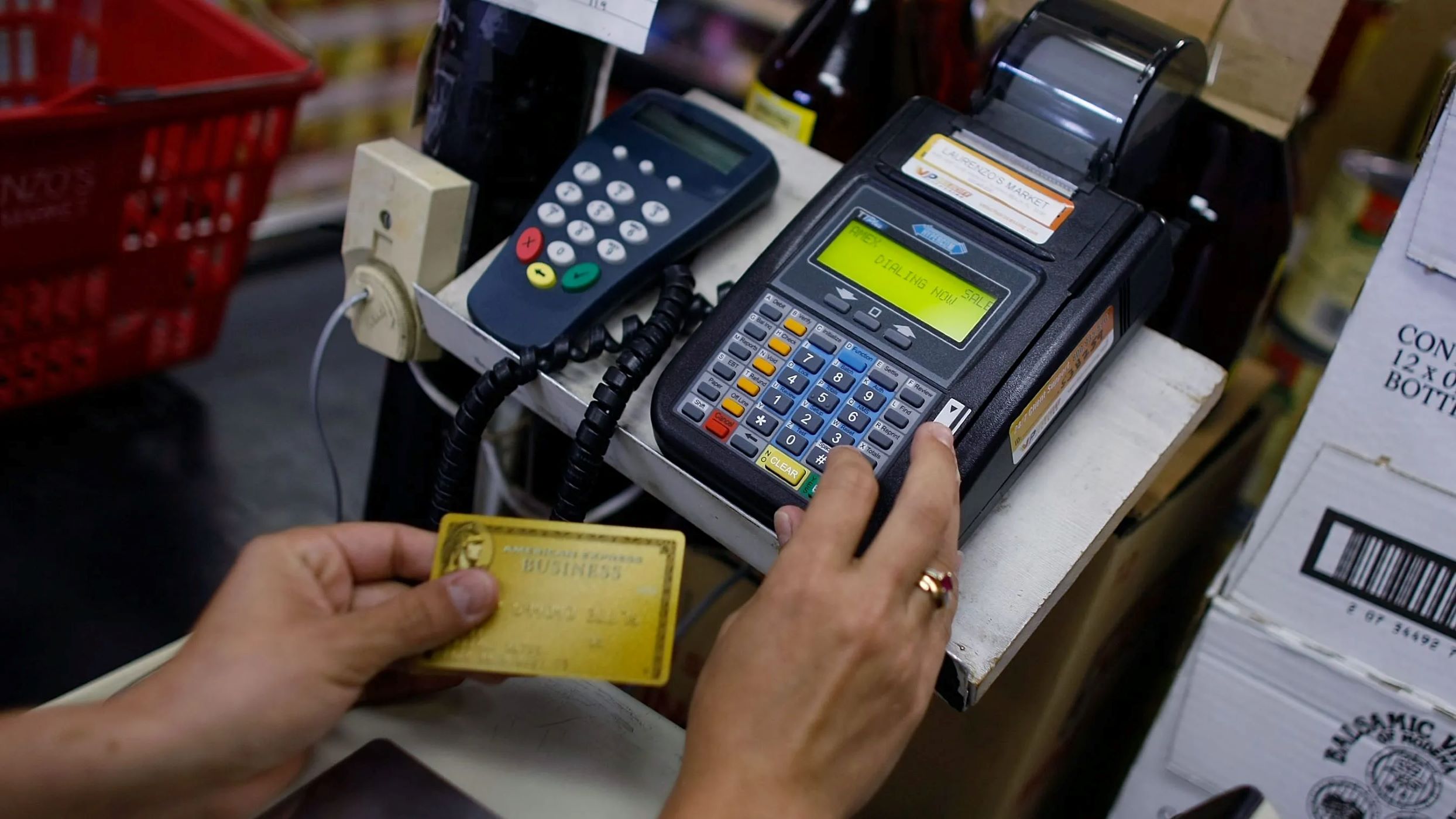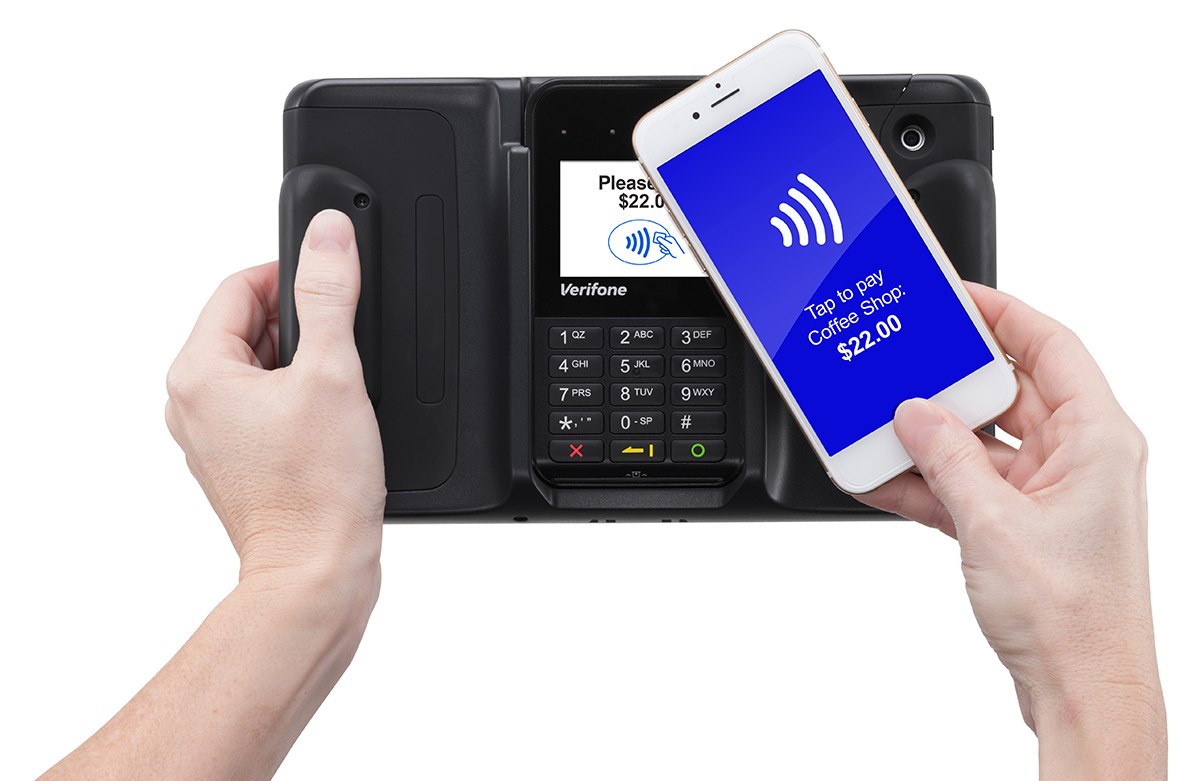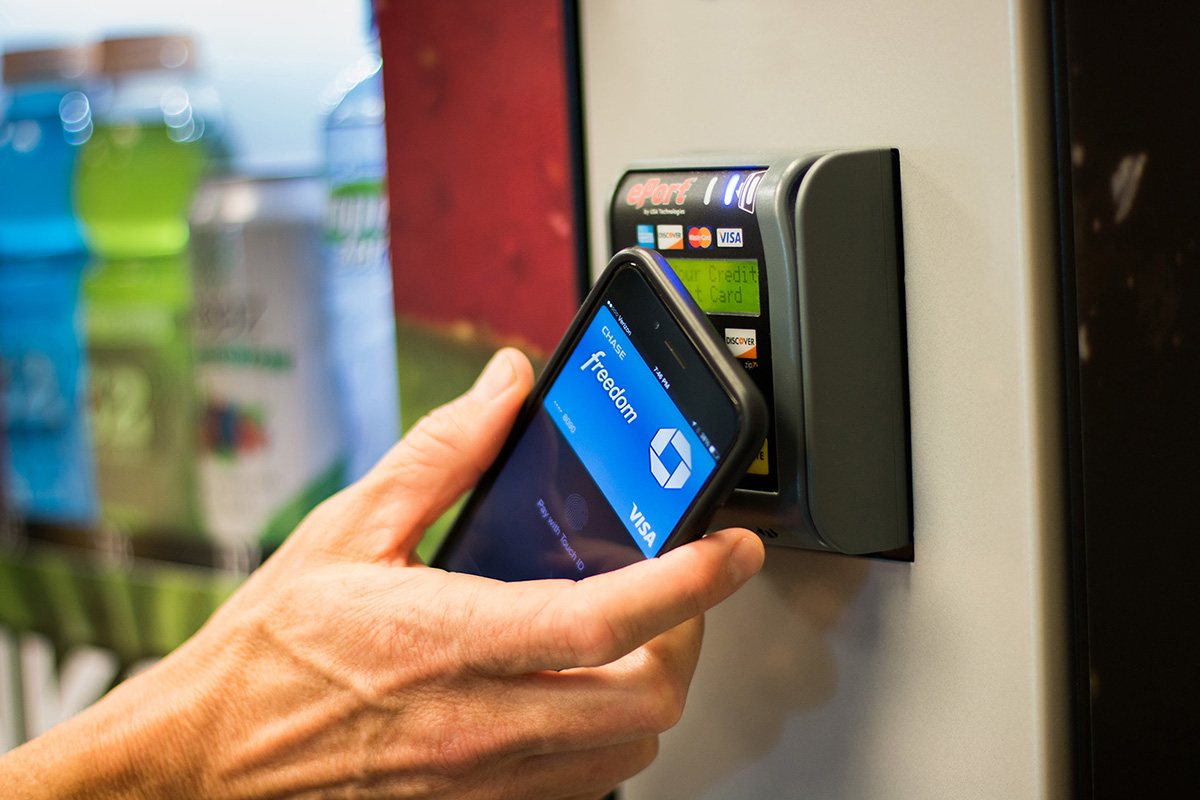

Finance
How Do Credit Card Vending Machines Work
Published: November 9, 2023
Learn how credit card vending machines work and the role of finance in enabling cashless transactions. Explore the benefits and convenience they offer.
(Many of the links in this article redirect to a specific reviewed product. Your purchase of these products through affiliate links helps to generate commission for LiveWell, at no extra cost. Learn more)
Table of Contents
- Introduction
- What are credit card vending machines?
- How do credit card vending machines process payments?
- Step-by-step process of using a credit card vending machine
- Security measures in credit card vending machines
- Advantages of credit card vending machines
- Limitations of credit card vending machines
- Future prospects of credit card vending machines
- Conclusion
Introduction
With the advancement of technology and the evolution of cashless transactions, credit card vending machines have become a popular and convenient way for customers to make purchases. These machines combine the ease of vending machines with the convenience of credit card payments, allowing users to buy products and services with a simple swipe or tap.
Credit card vending machines are self-service kiosks that enable users to make purchases using their credit or debit cards. Unlike traditional vending machines that accept only cash or coins, credit card vending machines provide a more convenient and secure method of payment. They are commonly found in various locations such as airports, shopping malls, train stations, and theme parks, offering a wide range of products such as snacks, beverages, personal care items, and event tickets.
These machines are equipped with a payment terminal that accepts credit and debit cards from major issuers like Visa, Mastercard, American Express, and Discover. They use secure encryption technology to protect customer data and ensure secure transactions.
The popularity of credit card vending machines stems from the convenience they offer. Customers no longer need to carry cash or worry about exact change. Simply swipe or tap their card, and the transaction is processed swiftly. Additionally, credit card vending machines eliminate the risk of theft or loss associated with carrying cash, providing peace of mind to both customers and business owners.
In this article, we will explore how credit card vending machines work, the payment processing methods involved, the step-by-step process of using these machines, the security measures implemented to protect customer information, as well as the advantages and limitations of this innovative technology. We will also touch upon the future prospects of credit card vending machines and how they are shaping the retail industry.
What are credit card vending machines?
Credit card vending machines, also known as cashless vending machines, are self-service kiosks that allow users to make purchases using their credit or debit cards. These machines have revolutionized the vending industry by providing a convenient and secure alternative to traditional cash-based transactions.
Unlike traditional vending machines that only accept coins or bills, credit card vending machines utilize modern payment technology to process transactions electronically. They are equipped with a payment terminal that accepts major credit and debit cards, allowing customers to make purchases by simply swiping or tapping their cards.
Credit card vending machines can be found in a variety of locations, including airports, shopping malls, train stations, office buildings, and entertainment venues. They offer a wide range of products such as snacks, beverages, personal care items, and even event tickets. This means that customers can easily access essential items or satisfy their cravings with just a few taps on the machine’s interface.
One of the key features of credit card vending machines is their versatility. They are not limited to selling pre-packaged products. Some machines are equipped with technologies that enable them to dispense freshly brewed coffee, custom-made sandwiches, or even hot meals. This makes credit card vending machines a popular choice for busy individuals who are looking for a quick and convenient way to satisfy their hunger or quench their thirst.
Moreover, credit card vending machines cater to the evolving needs of consumers by offering a wide range of payment options. In addition to accepting credit and debit cards, some machines also support mobile payment methods, such as Apple Pay, Google Pay, or Samsung Pay. This ensures that customers have the flexibility to use the payment method that is most convenient for them.
Overall, credit card vending machines combine the convenience of self-service with the ease of cashless transactions, making them an attractive option for both customers and business owners. Customers benefit from the convenience of using their credit or debit cards, while business owners can expand their customer base and increase sales by catering to the growing trend of cashless transactions.
How do credit card vending machines process payments?
Credit card vending machines use a series of steps to process payments securely and efficiently. Understanding the payment processing methods is crucial to ensure a seamless transaction experience for users. Here’s a breakdown of how credit card vending machines process payments:
- Card Detection: When a customer approaches a credit card vending machine, the machine’s card reader scans for the presence of a card. This can be done by inserting the card into a slot or tapping the card on a contactless payment zone.
- Card Verification: Once the machine detects the card, it verifies the card’s authenticity and validity. This verification process involves checking the card’s magnetic stripe or chip for encrypted data, as well as the expiration date and cardholder information.
- Transaction Initialization: Once the card is verified, the vending machine calculates the total amount due for the purchase. This information is displayed on the machine’s screen, along with any additional instructions or prompts for the user.
- Payment Authorization: At this stage, the machine sends a request to the cardholder’s bank or credit card company to authorize the transaction. The machine communicates securely with the payment network to ensure that the card has sufficient funds available and that it is not reported stolen or lost.
- Transaction Approval: Upon receiving the authorization response from the cardholder’s bank or credit card company, the vending machine determines whether the transaction is approved or declined. If approved, the machine dispenses the purchased product or completes the desired service.
- Receipt Generation: To provide a record of the transaction, the machine generates a receipt for the customer. This receipt typically includes details such as the transaction amount, date, time, and a unique transaction ID. Some machines allow customers to receive their receipt via email or text message.
It is crucial to note that credit card vending machines prioritize user data security. They employ encryption technology and secure communication protocols to safeguard customer information during the payment process. This ensures that sensitive data, such as card numbers and personal details, remain protected from potential security threats.
Overall, the payment processing method in credit card vending machines is designed to offer a hassle-free and secure experience for customers. By following these steps, these machines enable users to make quick and convenient purchases using their credit or debit cards, expanding the options available for cashless transactions in various locations.
Step-by-step process of using a credit card vending machine
Using a credit card vending machine is a straightforward and user-friendly process. Here’s a step-by-step guide on how to make a purchase using a credit card vending machine:
- Select the desired item: Approach the vending machine and browse through the available products displayed on the machine’s interface. Most machines have a clear and intuitive menu that categorizes the items for easy selection.
- Choose the item: Once you have identified the desired item, press the corresponding button or touch the item’s image on the machine’s touchscreen to select it. Ensure that the selected item matches your preference and meets your requirements.
- Confirm the selection: After choosing the item, the machine will display a confirmation screen, showing the selected item and its price. Take a moment to review your selection and ensure that it is correct. If you decide to cancel the transaction, there is usually an option to go back and choose another item.
- Insert or tap your card: Once you have confirmed your selection, proceed to insert your credit or debit card into the card reader slot or tap it on the contactless payment zone, depending on the machine’s capabilities. Ensure that your card is inserted or tapped correctly and remains in place until the transaction is complete.
- Complete the transaction: The machine will display the total amount due for your purchase. Verify the amount displayed and confirm the transaction by following the on-screen prompts. If the machine has a keypad, you may be asked to enter your PIN to authorize the transaction. Some machines may also require additional verification steps, such as signing a digital receipt or providing a signature on the touchscreen.
- Collect your purchase: Once the transaction is approved, the vending machine will dispense the selected item. Take your purchase from the designated collection area. If you encounter any issues or the item does not dispense correctly, contact the machine’s operator for assistance.
- Retrieve your receipt: After collecting your purchase, check if the machine offers a printed receipt. If so, take the receipt from the machine. Some machines may provide a digital receipt option, allowing you to receive it via email or text message.
Remember to keep your receipts for record-keeping purposes or for potential returns or exchanges. It is also important to ensure that you have removed your card from the machine before leaving to protect against unauthorized use.
Using a credit card vending machine eliminates the need for cash and provides a convenient and secure method of making purchases. By following the step-by-step process outlined above, you can easily and efficiently complete a transaction and enjoy the products or services offered by these innovative machines.
Security measures in credit card vending machines
Credit card vending machines implement various security measures to protect both the customers and the machine operators. These measures are designed to ensure the integrity of transactions and safeguard sensitive data. Here are some of the key security features found in credit card vending machines:
- Encryption technology: Credit card vending machines use encryption algorithms to secure the communication between the machine’s payment terminal and the payment network. This ensures that sensitive data, such as cardholder information and transaction details, are transmitted securely and protected from unauthorized access.
- Tokenization: To enhance security, credit card vending machines employ tokenization techniques. Instead of storing actual credit card data, the machines use unique tokens to represent the card information. These tokens are meaningless to potential attackers, reducing the risk of data breaches and unauthorized use of cardholder information.
- Secure card readers: Vending machines incorporate tamper-resistant card readers to prevent skimming devices or other fraudulent activities. These card readers are designed to detect any tampering attempts and immediately disable the machine if tampering is detected. This protects customers’ card information from being compromised.
- Physical security: Credit card vending machines are equipped with robust physical security features to deter theft and vandalism. These features include reinforced casing, secure locks, and surveillance cameras to monitor the surroundings. Physical security measures serve to protect both the machine itself and the customers’ personal information.
- Regular maintenance checks: Machine operators conduct regular maintenance checks to ensure that all security features are functioning correctly. Any malfunctions or suspicious activities are promptly addressed to maintain the integrity and security of the vending machine system.
- Compliance with industry standards: Credit card vending machines adhere to industry standards and regulations to ensure the highest level of security. They comply with Payment Card Industry Data Security Standard (PCI DSS), which outlines security requirements for organizations that handle payment card data. Compliance with these standards helps to maintain a secure environment for card transactions.
- Monitoring and auditing: Vending machine operators monitor and audit transactions to detect and investigate any potential security breaches or anomalies. These measures can help identify and respond to suspicious activities, ensuring that customers’ payment information remains protected at all times.
It is important for customers to be vigilant when using credit card vending machines. Here are a few tips to enhance your security:
- Inspect the card reader for any unusual attachments, loose components, or signs of tampering.
- Shield your PIN entry when prompted, protecting it from prying eyes or hidden cameras.
- Regularly review your card statements and report any suspicious or unauthorized transactions to your card issuer.
- Ensure that you retrieve your card and receipt after completing a transaction and securely dispose of any receipts that contain sensitive information.
By implementing robust security measures and staying vigilant, credit card vending machines provide a safe and secure method of making purchases for customers. These machines continue to evolve to address emerging threats and ensure the integrity and confidentiality of customer information.
Advantages of credit card vending machines
Credit card vending machines offer numerous advantages to both customers and business owners. These machines have transformed the way we make purchases and have become increasingly popular in various locations. Here are some of the key advantages of credit card vending machines:
- Convenience: One of the main benefits of credit card vending machines is the convenience they provide. Customers no longer need to carry cash or worry about exact change. With a simple swipe or tap of their credit or debit card, they can quickly and easily make a purchase, making the transaction process more seamless and efficient.
- Flexibility in payment options: Credit card vending machines offer customers a wide range of payment options. In addition to accepting major credit and debit cards, many machines also support contactless payment methods like Apple Pay, Google Pay, or Samsung Pay. This flexibility allows customers to choose the payment method that is most convenient for them.
- Increased sales potential: For business owners, credit card vending machines open up new opportunities for sales. By accepting credit and debit cards, these machines cater to customers who prefer cashless transactions. This expands the customer base and can lead to increased sales and revenue.
- Security: Credit card vending machines prioritize customer data security. They use encryption technology and follow industry standards to protect sensitive information during payment processing. This gives customers peace of mind knowing that their card details and personal data are safeguarded against unauthorized access.
- Instant transactions: Unlike cash transactions that may require exact change or the need to find a nearby ATM, credit card vending machines process transactions instantly. Customers can quickly complete their purchase and receive their desired item without any delays or inconvenience.
- 24/7 availability: Credit card vending machines are available round the clock, providing customers with access to products and services at any time of the day or night. This is particularly beneficial in high-traffic areas such as airports, train stations, or late-night retail locations where traditional stores may be closed.
- Enhanced product offerings: Credit card vending machines are not limited to selling pre-packaged snacks and beverages. Many machines now offer a wider range of products, including freshly brewed coffee, sandwiches, healthy snacks, and even hot meals. This allows customers to satisfy their cravings or access essential items at their convenience.
Overall, credit card vending machines offer convenience, flexibility, and security for both customers and business owners. They provide a modern and efficient way to make purchases, expanding the options available for cashless transactions and improving the overall shopping experience.
Limitations of credit card vending machines
While credit card vending machines offer numerous advantages, they also have limitations that should be taken into consideration. Understanding these limitations can help users make informed decisions when using these machines. Here are some of the key limitations of credit card vending machines:
- Dependency on technology: Credit card vending machines rely heavily on technology and connectivity. In case of technical issues or a loss of internet connection, the machines may become temporarily unavailable, leading to inconvenience for customers who are unable to make purchases.
- Transaction fees: Some credit card vending machines may charge transaction fees for using credit or debit cards, especially for smaller transactions. These fees can be an additional cost for customers and may discourage cashless payments for low-value purchases.
- Limited product selection: While credit card vending machines have expanded their offerings beyond traditional snacks and beverages, the range of products available may still be more limited compared to what is available in traditional brick-and-mortar stores. This can be a disadvantage for customers looking for specific or niche items.
- Maintenance and upkeep: Credit card vending machines require regular maintenance and servicing to ensure their proper functioning. This includes restocking products, routine inspections, and addressing any technical issues. Failure to maintain the machines can result in out-of-order machines or issues with payment processing.
- Risk of technical glitches: Despite the advancements in technology, credit card vending machines can encounter technical glitches or errors. This can include issues with the card reader, connectivity problems, or software malfunctions. Such glitches can disrupt the transaction process and lead to customer frustration.
- Potential for fraud: While credit card vending machines are designed to be secure, there is still a risk of potential fraud. Customers should remain cautious when using these machines and ensure the card readers are legitimate and secure. It is also important to review transaction records and report any suspicious activity to the card issuer promptly.
- Inability to provide physical assistance: Unlike traditional retail stores where staff members can provide physical assistance, credit card vending machines do not have human interaction. This can be a limitation for customers who require guidance or have specific queries about the products or services being offered.
It is important for both users and machine operators to be aware of these limitations and take necessary precautions to mitigate any inconveniences or risks associated with credit card vending machines. Regular maintenance, ensuring secure transactions, and staying vigilant can go a long way in ensuring a positive experience when using these machines.
Future prospects of credit card vending machines
Credit card vending machines have already made a significant impact on the retail industry, offering convenience, flexibility, and improved customer experiences. As technology continues to advance, these machines have promising future prospects. Here are some potential developments that could shape the future of credit card vending machines:
- Integration of AI and machine learning: Artificial intelligence (AI) and machine learning technologies have the potential to enhance the capabilities of credit card vending machines. By analyzing customer data and purchase patterns, vending machines can personalize recommendations and promotions, providing a more tailored and engaging experience for customers.
- Expansion of product offerings: The future of credit card vending machines may bring an even wider range of product offerings. Machines could include options for fresh and perishable items such as fruits, vegetables, or even meal kits. The integration of technologies like refrigeration or heating elements would enable machines to cater to a broader range of consumer needs and preferences.
- Improved user interfaces: Future credit card vending machines could feature more intuitive and interactive user interfaces, allowing customers to easily browse through product catalogs, compare prices, and access detailed product information. Touchscreens, voice commands, or even facial recognition technology could be incorporated to enhance the overall user experience.
- Integration with mobile apps: To further streamline the purchasing process, credit card vending machines could integrate with mobile apps. Customers could use their smartphones to browse available products, make selections, and initiate transactions without the need to physically interact with the machine. This would provide an additional layer of convenience and personalized user experiences.
- Contactless technology: The future of credit card vending machines may see a wider adoption of contactless payment technologies. With the increasing popularity of mobile wallets and wearables, such as smartwatches or fitness bands, vending machines could incorporate Near Field Communication (NFC) or other contactless payment methods to offer seamless and secure transactions.
- Integration with loyalty programs: Credit card vending machines could be integrated with loyalty programs, allowing customers to earn rewards, discounts, or personalized recommendations based on their purchasing history. This integration would encourage customer loyalty and provide incentives for repeat transactions.
- Green initiatives: In line with sustainability efforts, future credit card vending machines may incorporate more eco-friendly features. This could include energy-efficient components, recyclable packaging for products, or even the option for customers to receive digital receipts instead of paper ones.
As advancements in technology continue to shape the retail industry, credit card vending machines are likely to evolve to meet changing customer expectations. These machines have the potential to play a significant role in creating seamless and personalized shopping experiences while offering new possibilities for business owners to engage with their customers.
However, the future prospects of credit card vending machines will depend on various factors, including technological advancements, market demands, and consumer preferences. It will be important for machine operators to adapt and innovate to leverage these opportunities and continue meeting the evolving needs of customers.
Conclusion
Credit card vending machines have revolutionized the way we make purchases, providing convenience, flexibility, and enhanced security. These machines combine the ease of vending machines with the convenience of cashless transactions, allowing customers to make quick and seamless purchases using their credit or debit cards. With their widespread availability in various locations, credit card vending machines have become a popular choice for on-the-go customers looking for a hassle-free shopping experience.
Throughout this article, we explored the intricacies of credit card vending machines, including the step-by-step process of using them, the security measures implemented to protect customer information, and the advantages and limitations associated with these machines. We discussed how credit card vending machines offer convenience, flexibility in payment options, increased sales potential, and instant transactions. We also highlighted their limitations, such as dependency on technology, potential transaction fees, and limited product selection.
The future prospects of credit card vending machines are promising. Integration of AI and machine learning, expanded product offerings, improved user interfaces, and integration with mobile apps are just a few areas where these machines may see advancements. The ongoing evolution of contactless technology and the integration of loyalty programs also have the potential to shape the future of credit card vending machines.
In conclusion, credit card vending machines have transformed the retail landscape, providing a seamless, secure, and convenient way to make cashless transactions. As technology continues to progress, these machines are poised to further enhance the customer experience and offer exciting possibilities for both customers and business owners.
